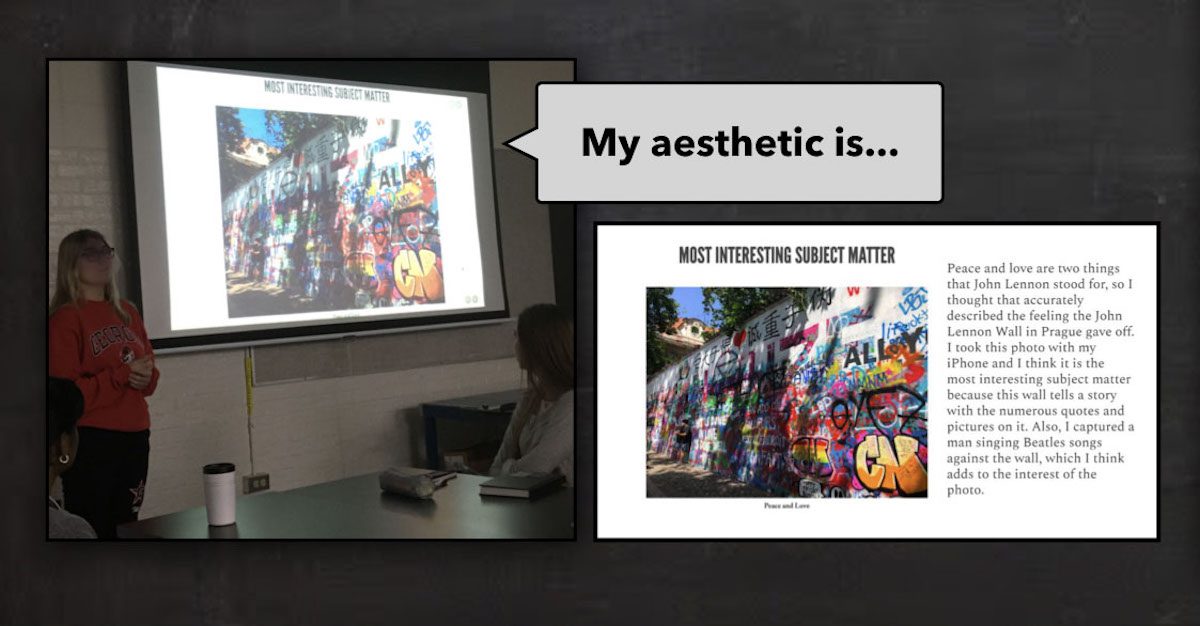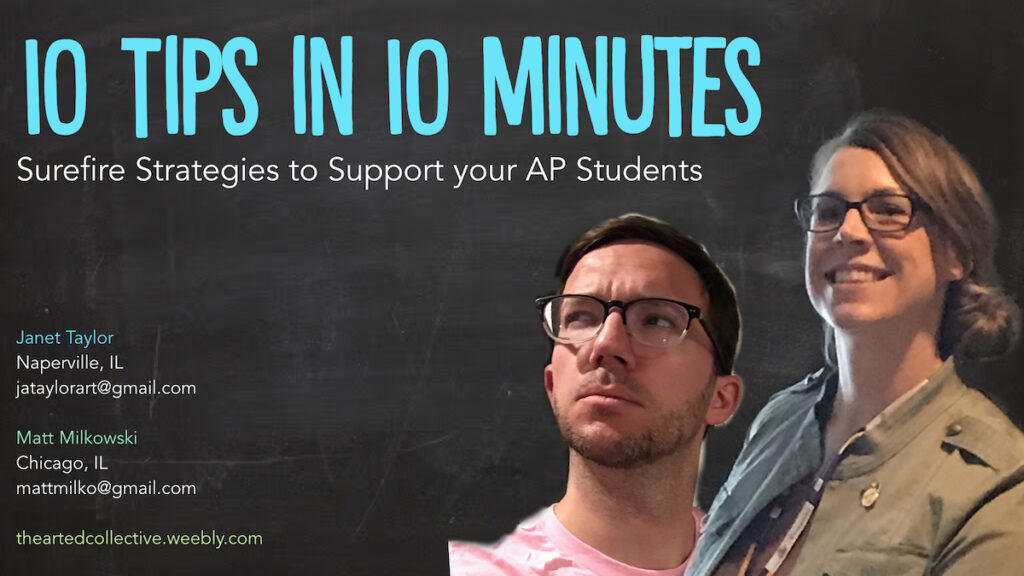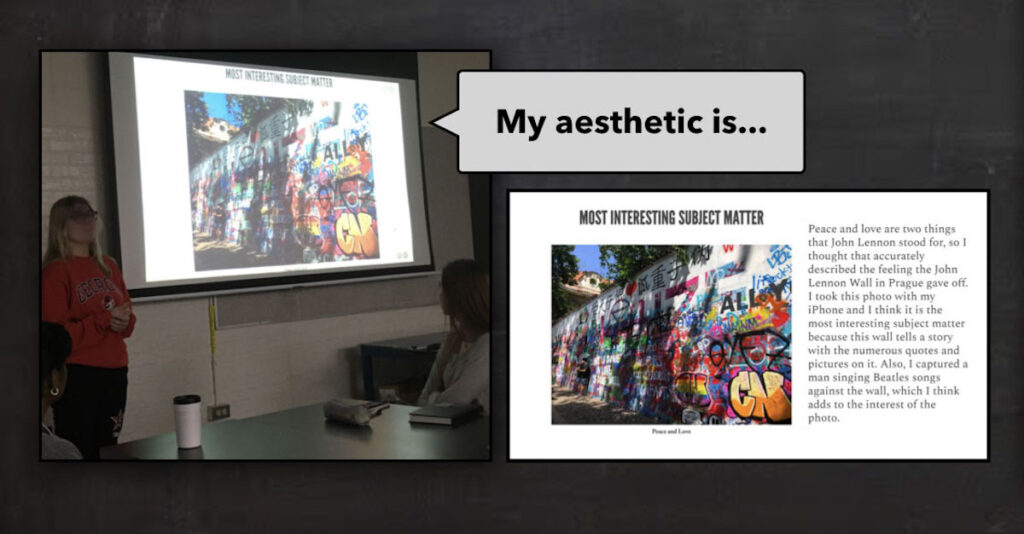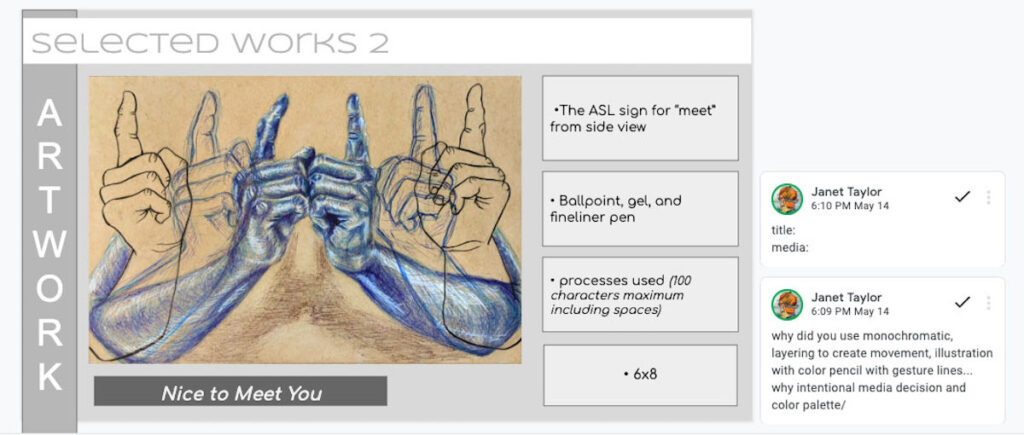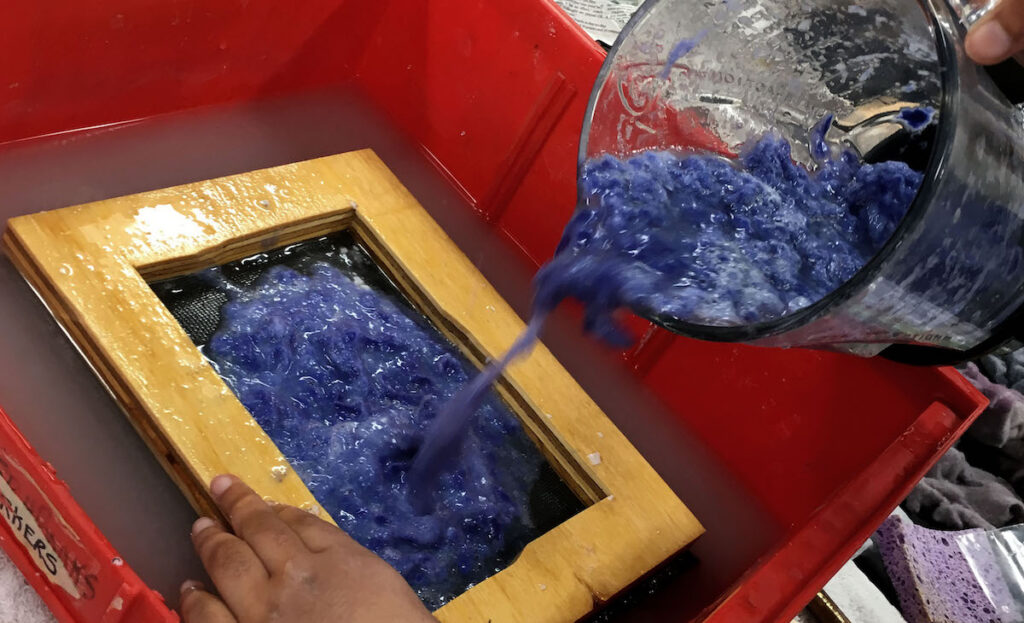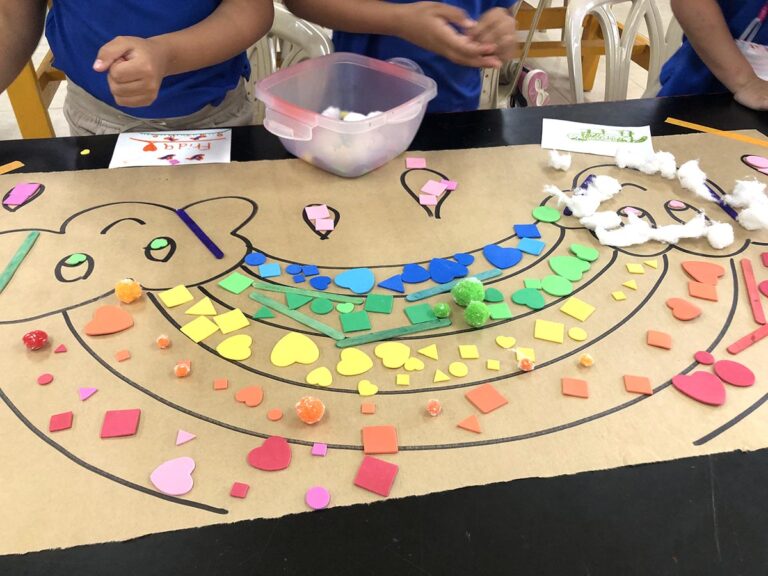Return to Learn with The Art of Education University
If you attended the Summer 2020 NOW Conference, you may have seen the session called, “10 Tips in 10 Minutes: Surefire Strategies to Support your AP Students.” In this session, Matt Milkowski and I explained various resources to help your students navigate your AP curriculum. This year, with varying teaching models, AP and advanced art students will have to adapt as well. Here are three specific strategies from that presentation to help you set your students (and you) up for success.
1. Get to know you: Historical Bests (Artist’s Bio)
“Historical Bests” asks your students to curate their top five to six artworks of all time and provide a little blurb about why these works represent the artist sharing. Students can create a slide presentation and present their works to the class. This works great as a summer assignment but could also be assigned within the first month of class. Asking students to choose their favorite works provides many benefits.
- Build confidence from day one. Students get to share about themselves, and others get to celebrate their achievements. By providing guiding questions or asking students to create an “Artist’s Bio,” students know what to talk about when it’s their turn to present. This is not only a great way to practice literacy skills, but also a chance for students to get to know each other. Make this into a celebration by asking students to write one interesting thing about each others’ works.
- Get to know your students. Many times, students come into an AP class from other teachers. This leaves us wondering what abilities students have. This exercise acts as a diagnostic tool to gauge students’ individual strengths, weaknesses, and overall needs. Besides assessing technical and personal interests, you can also gain important information about your student, such as which qualities a student uses to identify a “good” artwork.
- Teach valuable presentation skills. The first month of school is the key to establishing good habits. Use this exercise as a way to identify ways to improve the presentation of the artwork, whether that is through photographing the work or even how it is displayed on the slide. When students talk about their work, they often minimize what they have created. Presenting artwork with, “This is just a…” is not a great way to present yourself. Helping students talk about their work confidently starts on day one.
2. Organization: Google Portfolio and Folder
Organization is an important part of building a year-long portfolio. When May rolls around, you will want to be able to easily access files for portfolio submission to AP or college admissions. If your school has access to Google, using Google Slides to set up a digital portfolio and Google Folders for digital storage is essential.
- Create a digital portfolio using Google Slides. Starting the school year with a Slides template gets all students on the same page. Include key content information to set your expectations for documenting their creative process from research and planning to exploration and revision. Including a text box with the final artworks such as media, dimensions, and title will help students later when submitting to AP. With Google Slides, you can also add as you progress through the year so as not to overwhelm your artists at the beginning with too much information. They can go back to your template and copy and paste new slides into their portfolios at any time.
- Using a Google Folder will be a lifesaver this year. You can set up an AP folder to share with your class. Inside that folder, each student can be assigned their own to keep their portfolios, images, and other important files. This folder can get messy and will require maintenance to help support your students’ executive functioning needs. It will have three important purposes: facilitating critiques, high-resolution storage, and streamlined submission.
- When the folder is accessible to all students, group critiques are easy. On any given critique day, you can group students to work collaboratively and independently to review each others’ works. Students can comment directly on the artist’s slides or add a critique slide at the end of the portfolio to share their thoughts and suggestions.
- Easily accessible storage of full-resolution images will be critical throughout the school year. From gallery displays, local competitions, and final prints for portfolios, you must have access to quality files. Downloading the Google Slides portfolio is an easy way to share images through social media platforms, but it will be disappointing when printing blurry artwork.
- Instead of turning in finished artwork, you can save yourself some space to grade by accessing links from these portfolios and folders. When AP scores work or colleges review portfolios, it nearly all happens digitally. Reinforcing to students how these institutions be will be reading their work will help drive home those points on documentation skills.
3. Artmaking Routines: Exploration days
Getting students back into the routine of daily creating can be a struggle. Many times students don’t hit their deadlines because they’re stuck in a rut. Start your year off with exercises to stretch students’ minds and practice the skill of exploration. Establishing a weekly or biweekly habit of experimentation, whether it seems relevant or not, will push students to consider different media or techniques you wouldn’t normally have time to teach.
- Make your exploration low-stakes. Instead of insisting students make a full-fledged artwork using a new exploration, have them try and practice through small scale opportunities. Students can practice using tracing paper, for example, in multiple ways in the safety of their sketchbook. Or have your students work collaboratively to make hand-made paper where each student will receive a piece in the end. More often than not, students start integrating these ideas and techniques into their artmaking practice as they push their exploration without all the pressure.
- The more you practice, the more you create. Make these opportunities low-stakes and frequent. Rarely do artists practice once and apply. Instead, it takes multiple trials to get it right before pushing into the artwork. Students can learn how to make linoleum prints on a small scale using 2” x 3” blocks of soft cut and make many prints for low-cost. You can also make a large collaborative artwork or share them as Artist Trading Cards.
- If you value it, keep it routine. By injecting these days over time, you are constantly reminding students that continual exploration and experimentation are important. You could start out the year simply focusing on exploration for several weeks before moving into full creation. If you break this up over time, however, students will have something to look forward to during long stretches of studio time. They also can’t always make those important connections from exploration into artwork unless they are also balancing through their artmaking process.
However you plan out your year, remember setting up routines and expectations will help your students on the right path from day one. With so many opportunities to support and empower your advanced and AP students, it can be overwhelming to know where to start. Let these strategies create a framework for success.
Return to Learn with The Art of Education University
What are your favorite ways you set your advanced and AP students up for success?
What routines do you establish for students to help support exploration?
How do you help students keep track of their progress throughout the school year as they develop their portfolio?
Magazine articles and podcasts are opinions of professional education contributors and do not necessarily represent the position of the Art of Education University (AOEU) or its academic offerings. Contributors use terms in the way they are most often talked about in the scope of their educational experiences.
